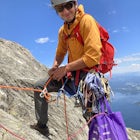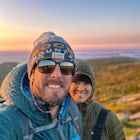Photograph Bear Lake
Estes Park, Colorado
Description
Added by Jason Hatfield
An iconic lake in Rocky Mountain National Park with year-round photography access.
Bear Lake is a popular tourist destination in Rocky Mountain NP, but when the sun is low in the sky or the stars are out you'll find the big crowd are gone. The lake is beautiful at sunrise and sunset but especially photogenic in the fall or at winter's end. While it doesn't have the darkest night skies it can still serve as an excellent location to watch meteors or photograph star trails above Hallet Peak. The area is also frequented by wildlife and you might capture an elk harem, flock of turkeys, or lone fox.
Download the Outbound mobile app
Find adventures and camping on the go, share photos, use GPX tracks, and download maps for offline use.
Get the appFeatures
Photograph Bear Lake Reviews
I've walked around this lake during the spring, summer and winter. All four season offer a unique perspective to the lake. Winter was a personal favorite because the lake was frozen over and it was a beautiful sight. This is a great trail for all activity levels and ages.
5.0
My wife and I added this to an already packed day of hiking simply because it was so easy to get to on our way back from a sunrise hike to Dream Lake and Emerald Lake. If you head up this way in RMNP, go check out this lake!
4.0
This lake is easy and handicapped accessed which is great but also makes it crowded. If you are planning on doing this early then you will find a spot, but I have also seen this parking lot fill up by 0700 on spring weekend
4.0
This parking lot is one of the busiest in the Rockies and I always make sure to get here prior to sunrise to make sure I had a space.
5.0
We finished our hike to Emerald Lake and before returning to the car we decided to quickly check out Bear Lake. It was worth the very fast hike there. You can do a loop but we did not, we simply admired the lake, took a couple pictures and returned to our car. It was raining and the clouds were rolling in, making it particularly different and beautiful.
4.0
Leave No Trace
Always practice Leave No Trace ethics on your adventures and follow local regulations. Please explore responsibly!
Nearby
Snowshoe to Emerald Lake
Flattop Mountain and Hallett Peak
Hike Flattop Hallett Andrews Loop
Ptarmigan Lake via Bear Lake Trailhead
Winter Hike Flattop Mountain
Dream Lake
Community
© 2024 The Outbound Collective - Terms of Use - Privacy Policy












